A walk through Gracia
BARRIO DE GRACIA
Let's continue talking about Barcelona. Today I'm talking about a very interesting neighbourhood in the city of Barcelona, the Barrio de Gracia. On the dates we went on the trip, Gracia was in festivities and the truth is that it was worth walking around, drinking a small beer from the street bars and seeing the beautiful decorations of the streets, including the involvement of neighbours decorating the balconies from their homes.
I have to admit that if we had not been recommended it by the girls from the flat where we stayed (they were some acquaintances of mine who let us use a room in their house), I do not know if we would have gone because we had looked for interesting points of the city and the Gracia neighbourhood was not highlighted. I guess it will be true that the neighbourhood earns a lot from parties with such an exuberant atmosphere and decoration, however, it is a very quiet destination to walk around and it give us tourists a break to the hurry that almost always characterizes us and the things that we are so anxious to see, visit and get to know... and that we do not miss out on any nook of our itinerary.
The Barrio de Gracia is located in the District of Gracia. At first, this district constituted a separate town, an independent parish of the city of Barcelona from 1628 until well into the 19th century (1897). It was located outside the urban core that was surrounded by a wall, until it was demolished. Perhaps this is one of the reasons why the neighbourhood of Gracia has so much personality of its own. It constitutes a neighbourhood where multiculturalism represents the day to day, where respect for others is a basic value of its inhabitants, and where the freedom of expression in music, art, painting, cinema or theatre takes full advantage by making itself known without prejudices. Once inside you have the feeling of being suddenly somewhere else, in a different place. Even among them, they refer to themselves as from Gracia and not to Barcelona, leaving their roots even clearer.
It is a totally self-sufficient neighbourhood, with a strong independent character, with all kinds of places: from restaurants, shops, accommodation... It is nice to see and walk calmly, even the smallest businesses have personality. They are usually very original and different places to the classic trade, bar or restaurant. It is very common to see a café-terrace, which at the same time is combined with a small shop, a book store... and there are also many restaurants that are not only Catalan food but one can taste typical foods of the world in international restaurants. With the simple act of walking through the streets, you can already feel the difference to the bustling city of Barcelona.
The truth is that sitting on a terrace and dedicating your time to watching people pass by is interesting because it mixes very different lifestyles. It is a neighbourhood where races and even cultures are mixed and yet it still has a very traditional character since the older population is very abundant. It also serves as a residence for Bohemian artists and collectives, which is why we can find small craft shops, coffee shops where concerts often take place from neighbourhood groups, small boutiques that appeal to local artists and designers...
I will leave a link here to the well-known TimeOut guide, where you can gossip and plan your walk through Gracia, seeing some of the most outstanding places to compare, eat or coffee:
Thanks to its origins, Gracia has been the cradle of gypsy populations that have helped to give it the character of the neighbourhood today. In fact, some of the well-known musical artists in Spain have stayed there, such as Antonio González Batista, the husband of Lola Flores, whose stage name is El Pescaílla (who died in 1999), who is said to have been the pioneer in the world of the Catalan rumba.
Within the great city of Barcelona, the Barrio de Gracia is a perfect place to escape from all the turmoil of the streets and the mass of tourists that characterize some of the most emblematic points of the city. It is a very quiet neighbourhood, which records a very low number of robberies and where people feel safe, away from pickpockets or night fights. In addition, it is usually an ideal place to stop feeling like a tourist (as they tend not to frequent the area too much), sit on a terrace and have a pleasant chat.
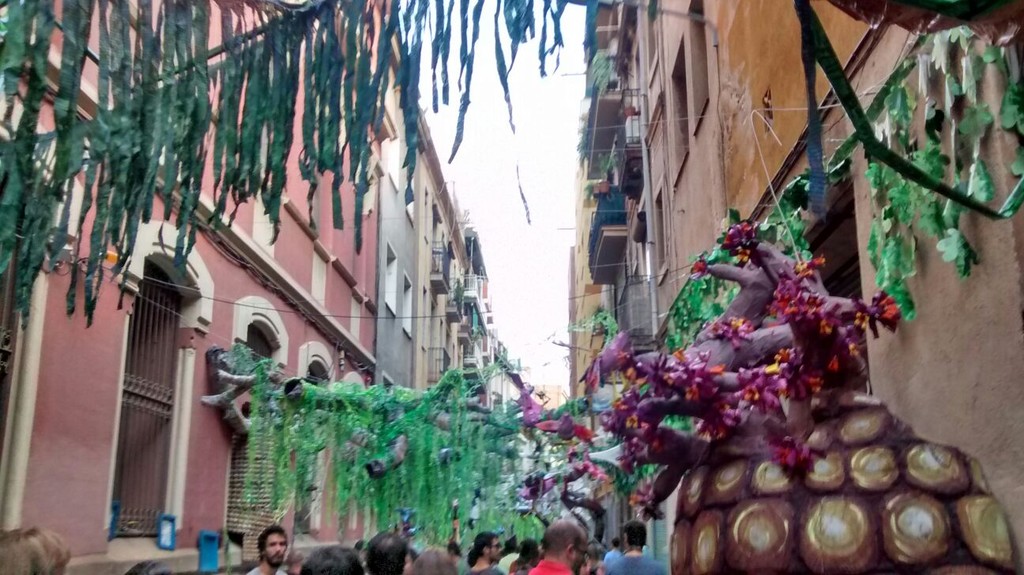
What to see in Gracia?
Although the Barrio de Gracia does not have as much architectural power as other places in the most popular areas of Barcelona, there are some buildings and other places that also belong to that peculiar style that characterizes the Catalan city, such as:
- The Casa Fuster: an important stone and marble building that was restored and turned into one of the most luxurious hotels in the city in 2004.
- The Casa Vicens: the well-known Catalan architect, Antonio Gaudí, modernist building according to the current of the architect dating from 1888, which was Gaudí's first important work after finishing his architecture studies.
- Mercat de la Libertad: This market is situated in the Plaza de la Constitución. It was a place where farmers in the area could sell their products. Today, although it has been renovated, it retains its original charm and is used today as a market for various types of food. Some even attribute more important than the Boqueria market located on Las Ramblas.
- The well-known Park Güell: is also located in this neighborhood. It is not necessary to go into the heart of the neighbourhood in order to visit this park but now you know, if you go to visit the park, you have a lot nearby of narrow streets to be able to walk and say that you have been in Grace!
- Another one of the most emblematic places is "La Plaza del Sol", a meeting place especially for young people, since during the evenings there is a festive atmosphere with music and improvised bars, or The John Lennon Square", a relatively recent square where one can enjoy a moment of tranquility in their walk by Gracia.
GRACIA FESTIVAL
The neighbourhood, in addition to all the aforementioned, is well known for the festivity "Fiesta Mayor de Gracia" that is celebrated in the middle of August, which lasts five days. By chance, it coincided with when we travelled, they were in full parties and recommended that even if we were not there at night if we did not want to be, it was worth going for a walk one afternoon, to be able to enjoy the atmosphere and the decorations above all... The streets of the neighborhood become unrecognisable with large sets that are very voluptuous and striking, some of them call more attention since they are made with recycled materials (glass, cartons of egg cups, plugs, plastic packs of soda cans... ) Each street has a theme and even when hardly entering the street one can perfectly see what it is, since the decorative motifs are everywhere, in abundance and of great size. It gives the feeling that they take it quite seriously since they can see the balconies of the houses really worked, with sets of buildings simulating a city covering the whole railing, a nurse treating one of his patients... the truth is that even just seeing the amount of work that has surely gone into them, already makes you admire it and even to stop to analyze the detail and work of the decoration.

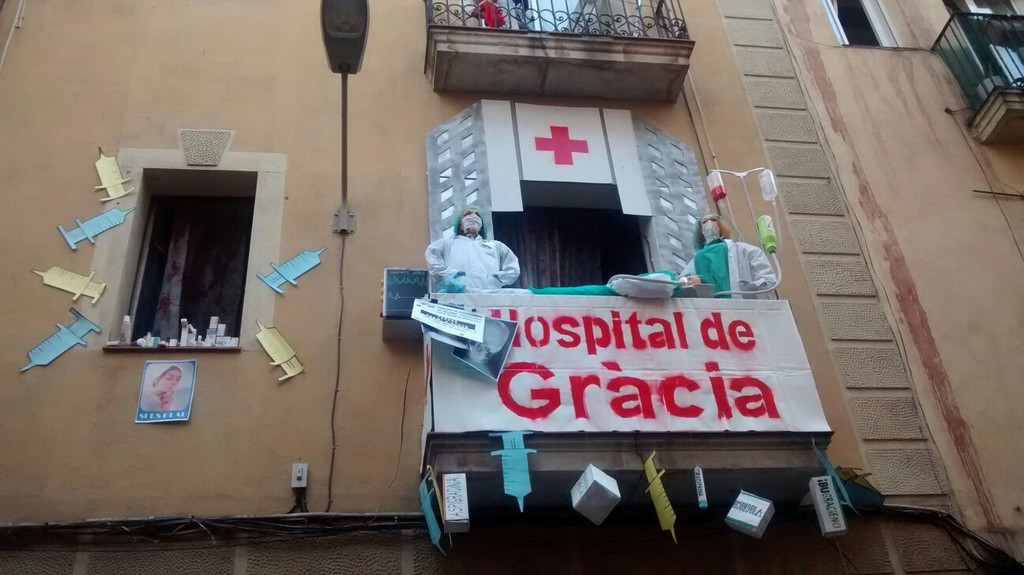
It seems that the ornate streets are thanks to the year-round work of the neighborhood associations (including this particular decoration of the private balconies of each house), who compete among themselves to see which is the best of all (although the truth is I do not know if the award is mere recognition or if there is an economic or merely symbolic prize).
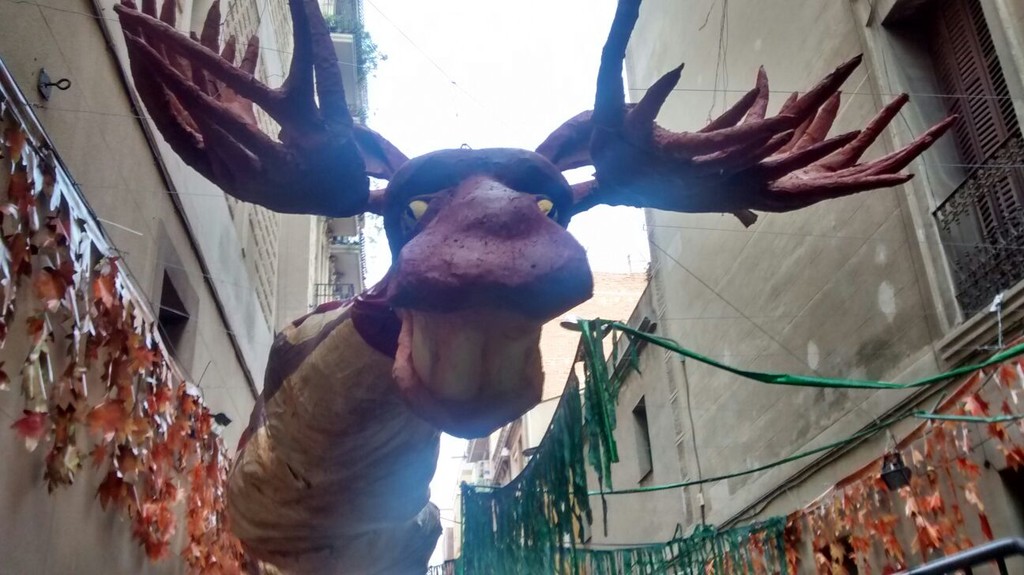
The parties are apparently very popular in Barcelona and it is interesting that in order to organize the traffic of the large masses of people that it attracts from all parts of the city, organize the neighbourhood as if it were a road map for traffic, marking streets as one-way, in which you can only move in one direction, having a single entry point and another exit point. This task is facilitated since, in the nucleus of the neighbourhood, where the decorations are and the shows... are more abundant, it coincides with a grid organization of the streets, which also facilitates orientation.
Shops put bars in the streets, we even saw them in some private low, garages, which were open and had a counter with a beer dispenser to supply the clientèle. To attract attention, they make exotic cocktails, they demand the attention of the passer-by with music of different styles, thematic nights of some region of the world... and there is also live music of different musical styles and even group choreography, choirs... the streets stop being ways to walk and they happen to be tracks of dance to enjoy the pleasure of the different types of music outdoors.
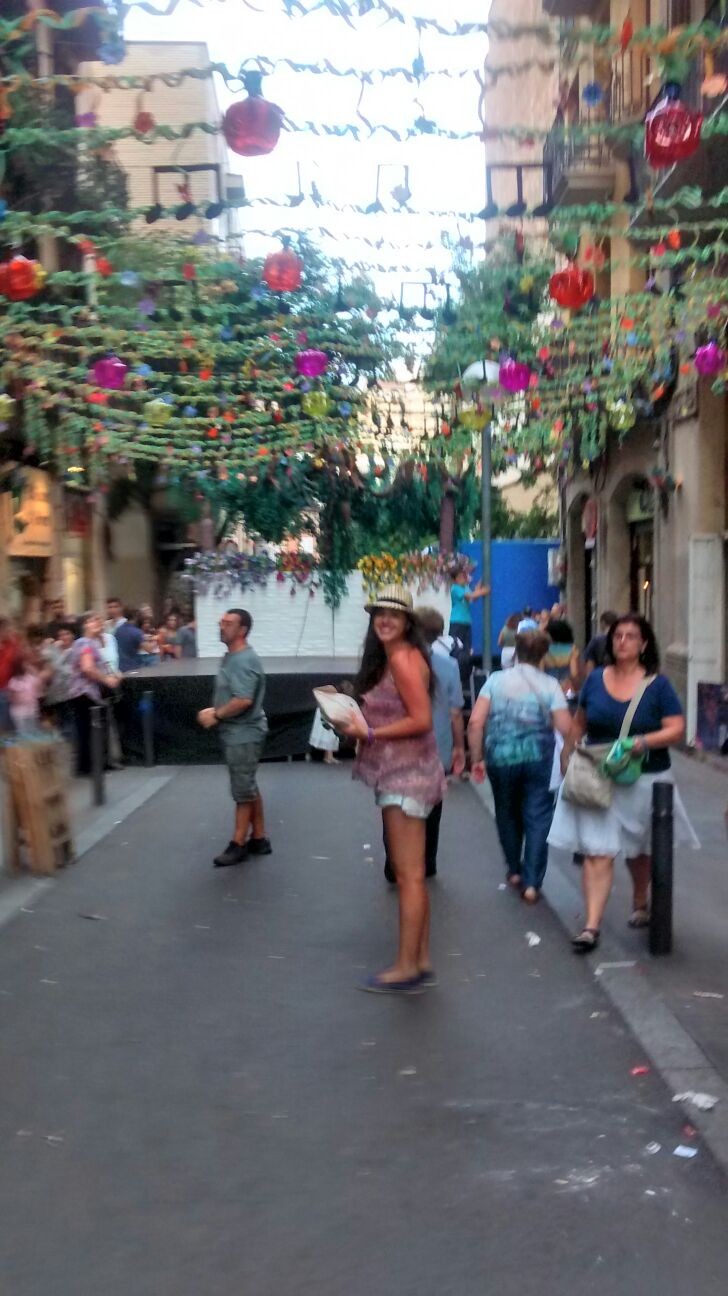
How to get there?
Arriving in this neighbourhood is not a problem since there are metro stops nearby to connect it with any other point in Barcelona. Fontana (L3), Lesseps or Joanic (L4) are some of the metro stations surrounding the Gracia neighbourhood.
It will depend on whether you look for a specific point if you want to go through the Park Güell first... in any case, they can provide you with a street map of Barcelona at any tourist point in the city to be able to guide yourself and organize the trip calmly.
On our tour, we stopped at Lesseps and we entered Gracia, although when we wanted to leave the neighbourhood we went wandering around Barcelona visiting other emblematic and architectural buildings without having any direction but as I said, that is one of the advantages, sneak into any metro stop and you will become oriented again.
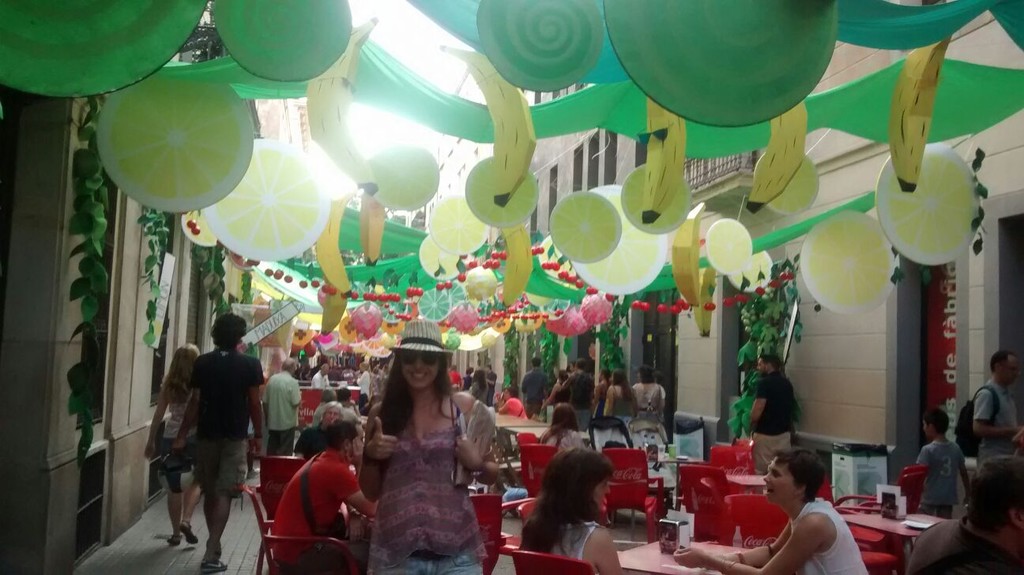
I hope this has given you enough advice about a place for you to visit, away from the great mists of tourists, where to enjoy in a city of such different environments. Visit, enjoy and tell me your opinions!
Photo gallery
Content available in other languages
- Español: Un paseo por Gracia
- Italiano: Una passeggiata nel quartiere di Gracia
Rate and comment about this place!
Do you know Gracia Neighbourhood? Share your opinion about this place.





















